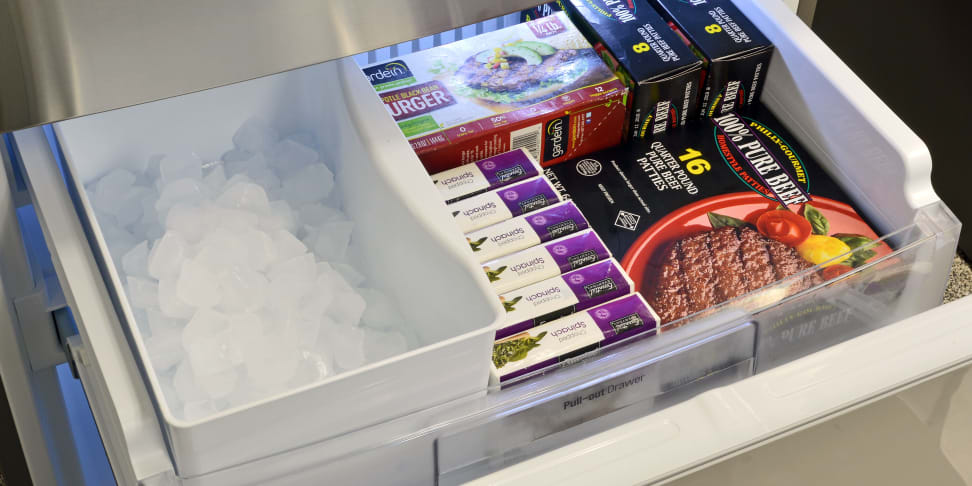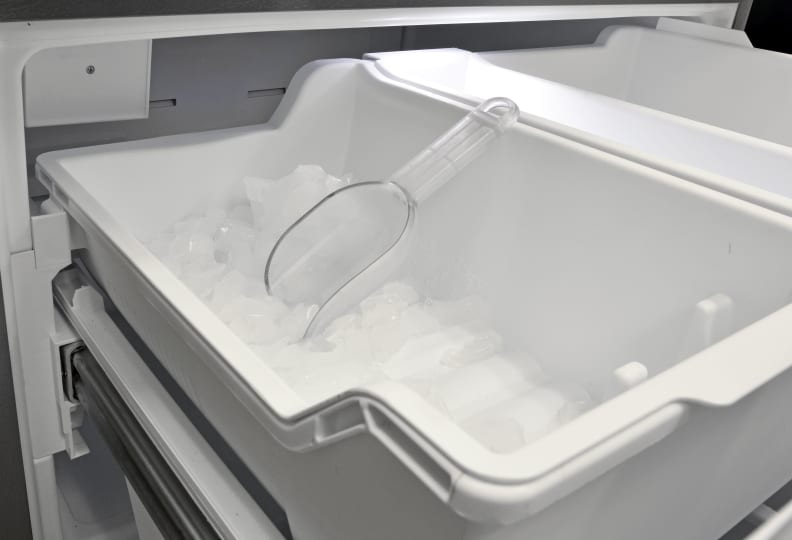We crush these three myths about ice makers
Who knew frozen water could be so expensive?
 Credit:
Credit:
Recommendations are independently chosen by Reviewed's editors. Purchases made through the links below may earn us and our publishing partners a commission. Prices were accurate at the time this article was published but may change over time.
Ice makers: Those mysterious little contraptions that churn out frozen cubes of water and occasionally make a lot of noise. We’ve already explained how they work, but after spending thousands of hours testing fridges with ice makers, we wanted to fill you in on some tips for making the most of yours.
MYTH: I should leave my ice maker turned on all the time. If it’s not actually making cubes, it’s not drawing power, right?
Wrong.
Ice makers not only need power to make cubes, they also draw power to engage heating elements that prevent all the inner workings from freezing up, and to keep cold air circulating.
That’s especially true if an ice maker is inside the fresh food compartment of your fridge, where it has to do something to keep the ice that’s built up from melting.
“The ice makers are often aftermarket pieces, interchangeable between different products, that run on an independent cycle compared to the rest of the fridge,” said David Yashar, deputy chief of energy and environment at the National Institute of Standards and Technology (NIST).
{{ photo_gallery name="Fridge-Mounted Ice Makers" }}
That power consumption adds up real fast, even when your ice bin is completely full. For instance, a popular 21 cu. ft. fridge with an ice maker is estimated to use 471 kWh of energy each year. The same fridge without the ice maker uses just 386 kWh.
For the average American, that’s a difference of about $10 a year—up to 30 percent of a fridge’s total power consumption. Of course, older models use more.
So the quick answer is, when you don’t need to make ice, turn the ice maker off. When you start to run low, turn it back on.
If you have a more intricate ice maker—one that feeds a through-the-door dispenser in a French door fridge, for example—make sure you take the time to open up the ice maker and double check that nothing has melted in a weird way that would cause the machine to get stuck before you turn it back on. That can lead to a damaged ice maker and an expensive repair.
MYTH: Ice is just frozen water, right? It doesn’t ever go bad, especially if you change your fridge’s water filter periodically.
Wrong again.
There are two things that can happen to ice that you want to avoid. First, it can start to melt—and yes, this is true even if your ice maker is in a freezer. There simply is no freezer around that stays below 0°F all the time. Even if you crank it to the lowest setting, it has to go through periodic defrost cycles.
Eventually, cubes can start to fuse together into a giant ice ball that requires more effort to break apart than is necessarily worth it. Toss it in the sink, and start over.

Fancier fridges like this one can even include two ice makers: One on the door with a dispenser, and one in the freezer. This one even comes with its own ice scoop!
Second, ice can actually start to absorb the “flavor” of your freezer. Stale air, plastic, old food… Many people report a garlic smell after their ice has spoiled. Again, chuck it, turn the ice maker back on, and start over. If you’re going to use ice, make sure it’s good ice.
MYTH: Your ice maker has to be used for dispensing ice.
True... sort of.
Okay, this one might not be a myth. But you may find yourself with a fridge that has an ice maker which you simply don't need or want to use. You can always repurpose the bin that comes with it into organized food storage. Just make sure your ice maker is turned off when there's no water flowing to it. Otherwise, the ice maker's components will continue to run, which is a huge waster of energy and could damage the fridge.
Or, if you have an old model, you do what this guy did and turn it into a candy dispenser. Just... don't do it to a new fridge. It's whimsical, but will likely void your fridge’s warranty.

Cheaper French doors that don't have through-the-door dispensers will often include a basic ice maker like this one in the freezer.



